Our expert local tour guides will meet with you on your arrival at the Kotoka International Airport Accra, which is situated on the beautiful gold coast of Western Africa. Look out for the African Star Tours sign when you leave the main terminal building after passing through customs. Make yourself known to your guides who will be accompanying you for the duration of your time in Ghana and they will take care of you from here.
After boarding our vehicle, which will be your mode of transport for the duration of your tour, we transfer you to your accommodation which is situated in Accra. Once we have checked you in, our experienced guide will offer you Akwaaba (welcome) and brief you on all aspects of your trip. You can enjoy your evening meal at the hotel restaurant whilst acclimatising yourself to West Africa.
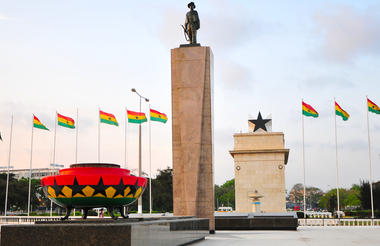
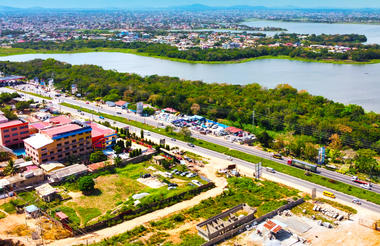
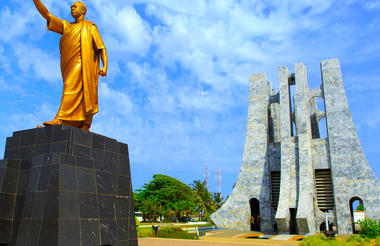
Economic districts, National Museum, James Town, Independence Square, Kwame Nkrumah Memorial Park and National Cultural Centre
Your first full day in Ghana, after breakfast at our hotel, we set off for our tour of Accra, passing through the economic and administrative districts on our way to the National Museum. Almost all the displays here are ethnographic in nature and the museum gives us an excellent overview of West African culture. The displays in the museum are not only from Ghana but most West African countries. There is an adjoining garden which is home to various sculptures which talk about West African tradition and customs and gives an overview of West African history. During our time here, we also get the chance to view and purchase some wonderful examples of traditional fabrics and crafts.
James town is next, we will enjoy a walking tour of this old community taking in some of the historical structures that predate the colonial era. The locals are committed to conserving these buildings and have made significant efforts to maintain them, our time here gives us an excellent idea of what it was like during the colonial era. The 30-meter-high lighthouse built by the British in 1871 and the attractive colorful fishing boats on the beach are also wonderful to see. We continue to Fort James that was built by the British as a trading post in 1673, before it joined the Dutch Fort Crêvecœur, and the Danish Fort Christiansborg. Fort James gave its name to the Jamestown neighborhood in Accra. These areas give us a perfect picture of old Accra, distinguishing between British Accra and Dutch Accra. Of interest are the Brazilian stone houses, built by free enslaved African’s who reside in Brazil, they made their way back to Africa after the slave trade was abolished and their descendants have now integrated with the locals of James Town.
Lunch will be taken at a local restaurant (Country Kitchen) serving a selection of West African and continental dishes. In the afternoon we pass by Black Star Square which houses the independence monument and continue to Independence Square which is our main ceremony grounds and where we find the enclosed flame of African liberation, which was lit by Kwame Nkrumah himself in 1961. A short distance away we find the Kwame Nkrumah Memorial Park, final resting place of Ghana’s founder. Set in attractive gardens, there is an adjoining museum, which contains photos, artifacts and an insight into this incredible man’s life. The center was designed by a Ghanaian architect and built using Italian marble. Adjoining the park is the National Cultural Center, which is Ghana’s largest outdoor arts and crafts market where we find locals selling traditional crafts from all over West Africa. After testing your bargaining skills, we return to our accommodation for our evening meal and to relax with the remainder of the evening free leisure time.



TK Beads, Aburi Botanical Gardens and Craft Market
An early start as we check out of our hotel and set off Northwards towards the Ashanti Region of Ghana. Our journey today will take us into the beautiful Akuapem hills, but before we head out of this bustling city we stop first at TK beads, experts in making beautiful traditional beads using ancient methods. Your guides will talk you through the skilled process of making the beads. Beads are culturally a symbol of wealth and beauty here in Ghana and are still used during traditional durbars and festivals. After the demonstration we can admire and buy a wide selection of beads that have been made here in the onsite shop.
Our journey continues, taking us through the beautiful Akuapem range with outstanding views across Accra and Tema in the distance. At the top of the range we find the Aburi botanical gardens, set in a beautiful location that were founded by the British in 1890. The gardens are home to a wide variety of indigenous and exotic flora, offering outstanding views to Accra on a clear day. As we walk around the gardens our guide will identify the many trees and plants found here, some with medicinal properties and explain how they benefit the locals. A short distance from the gardens we find the relaxed and friendly Aburi craft village, where traditional African drums, sculptures and other crafts have been carved for generations. As we watch the skilled craftsmen at work it is worth noting that prices here are amongst the lowest in Ghana, making
Aburi an ideal place to pick up some souvenirs. Your guide will talk you through the meaning and local beliefs connected to many of the sculptures that have been made the same way throughout history. Our lunch will be taken in Koforidua capital of the Eastern Region of Ghana before we continue our journey to Kumasi arriving in the early evening. Once we have checked into our accommodation we enjoy our evening meal with the remainder of the day free leisure time to relax.



Manhyia Palace, Cultural Center, Kejetia Market, Okomfo Anokye Sword and KNUST University
A well-deserved relaxing breakfast this morning after our long journey yesterday. A day of culture and history awaits us as we set off on our city tour of Kumasi heading to the Manhyia Palace, home of the Asantehene King of the Ashanti’s and ruler of the powerful Asanteman Kingdom. The Palace Museum offers a fascinating excursion through the history of this powerful tribe and is extremely informative on the well documented Ashanti history and culture. Our tour gives us a firsthand insight into the legacies of the Ashanti’s and enables us to understand their culture during our time in this region. We continue to visit the National Cultural Centre. The cultural center is in one of the oldest suburbs of Kumasi near Bantama. There is a wonderful craft market here and during our leisurely tour we can visit the Prempeh II Jubilee museum which offers an excellent overview of Ashanti history and houses some wonderful ancient artifacts. A short distance from the palace is Kejetia market which is reported to be the largest outdoor market in West Africa. Visiting here gives us a wonderful opportunity to experience everyday life for the people in this great city and pick up a few bargain souvenirs. The market is a labyrinth of stalls nestled closely together, and a hive of activity. Some stall holders sleep here in the evenings as trade rarely stops. Lunch will be taken at a local restaurant which sells an excellent selection of local and continental dishes.
Our next stop is the Okomfo Anokye sword found at the Okomfo Anokye teaching hospital in Kumasi. Okomfo Anokye was a powerful priest born in 1600 in the Eastern Region of Ghana who helped the then Ashanti King Osei Tutu I to defeat the powerful Denkyera tribe. After defeating the Denkyera, legend has it the Golden Stool of Ashanti descended from the sky and landed on Okomfo Anokye’s lap, which he gave to the Ashanti King. He then planted a sword into the ground as a symbol of unity between the Ashanti’s and Nzema tribes. The sword is still there to this day and has defied all human strength to pull it out. Prior to returning to our accommodation we visit the Kwame Nkrumah University of Science and Technology which was established by Ghana’s founding President Dr. Kwame Nkrumah in 1952. It is the leading university in the sub region for research into science and technology with students from all over West Africa studying here. Our evening we have the option of heading into the city to experience Kumasi night life where we can enjoy our evening meal and a live highlife band. If you are not feeling up to a late night you can choose to relax at your accommodation.



Ancient Kente and Adinkra Villages, Ashanti Traditional House and Sakoban Krofrom
A morning visit to the last material remains of the great Asante Empire as we visit the traditional Asante buildings that are now recognized as World Heritage Sites by UNESCO. There are 10 active shrines within the buildings which are made from bamboo, timber and mud and thatched roofs. The walls are designed with motifs that have traditional symbolic meanings attached to ancient Adinkra symbols that we will learn more about later today. This is also where Nana Yaa Asantewaa, possibly the most important women in Ashanti history comes from, a great female warrior who led the Ashanti’s in the 1901 war against the British. Nana Yaa Asantewaa was also the Queen Mother of Ejisu Besease and we will visit the local spiritual shrine where she used to fortify herself before going into battle.
We continue our journey through Ashanti history by visiting the traditional villages of Adanwomasie and Ntonso. Our first stop is Adanwomasie, the birth place of Ghana’s rich colorful Kente cloth. Adanwomasi produces some of Ghana’s finest Kente cloth, many designs of cloth are woven here, and some are exclusive only to this region. Quality time is dedicated here as we walk through the community, interacting with the locals whose families have been weaving kente for generations playing an important role in the history of this beautiful cloth. During our time here, we learn about the history behind the many designs and see skilled weavers outside their homes still using traditional looms that have not changed in design for centuries. Former US President Bill Clinton has had a design named after him called the “Clinton Kente” as Ghanaians were so impressed with the respect he showed our nation during his state visit to Ghana when he was in office. An ideal time to purchase quality kente cloth at very low prices before we set off for Ntunso.



Assin Manso and Cape Coast Castle
This morning we take a leisurely breakfast before setting off Southwards to Elmina in the central region of Ghana. The town of Elmina was given its name by the Portuguese due to the abundance of Gold found in Ghana, translated Elmina means The Mine. Gold is of such importance to Ghana today and historically that we were even known as the Gold Coast before independence. Ghana’s gold is of the highest quality and we are the 8th largest exporter in the world and second largest exporter in Africa behind South Africa.
We stop at Assin Manso, an important town along the enslaved African trade routes. The town surrounds the Ndonkor Nsuo (Enslaved African River). This river is where enslaved Africans were checked for fitness and bathed before being transported to Cape Coast for shipment to the Americas. The slaves would have walked hundreds of kilometers from Northern Ghana through thick forests in shackles and chains, many being in poor health once they reached Assin Manso. Once bathed and rested the slaves would continue the final 32-mile march to the dungeons of Cape Coast Castle where they would remain for up to 6 weeks before being shipped to the Americas. In 1998, a symbolic gesture was made when the bodies of two free (previously enslaved) Africans, Samuel Carson from New York U.S.A and Crystal from Kingston Jamaica were returned to Cape Coast Castle and symbolically passed through the “Door of no Return” before being transported to Assin Manso for re-internment.
After our tour we continue to Cape Coast, we enjoy lunch upon arrival at a local restaurant overlooking the ocean before visiting the nearby Cape Coast castle which has been designated as a world heritage site by UNESCO. The castle is a thought provoking monument to a harrowing period in the region’s history. Quality time will be spent in the afternoon on an emotional journey touring this castle which held more enslaved Africans captive than any other in West Africa, viewing the dungeons and the infamous “Door of no return”. There is a historical museum inside, which explains the entire history of the castle and Cape Coast itself, as well as a souvenir shop selling literature on all of Ghana’s forts and castles, as well as the cultural history and traditions of Ghana. After a wonderful but thought-provoking day, we continue to check into our accommodation, enjoy dinner and relax.



Kakum National Park, Canopy Walkway, Stingless Bee Centre, Independence Square, Kwame Nkrumah Memorial Park and National Cultural Centre
An early start as we set off for Kakum National Park in the morning, after breakfast and Africa’s world-famous rainforest canopy walkway. This is a truly beautiful, tropical guinea rainforest and the canopy walkway is sure to be a highlight of your time in Cape Coast. This national park protects the original habitat that was found in this location and was the local’s home and major source of food. The walkway consists of 7 bridges, attached to 7 emerging trees, 40 metres above the rainforest floor. Prepare to take a deep breath as you walk the suspended bridges. You will marvel at the outstanding views that stretch for miles across this breathtaking rainforest as you rest on the viewing platforms that are attached to the emerging trees between the bridges. We are sure you would agree that this is an exciting excursion never to be forgotten.
We return to the park headquarters where we find an excellent information center that offers a very informative overview of the park’s flora and fauna. Over 40 different mammal species have been recorded within the park, which includes forest elephants, leopards and 6 primate species to mention just a few. As short distance from Kakum and on the border of the forest we find the International Stingless Bee Project. There have been approximately 9 species of stingless bees identified here in Ghana and their importance to our eco system is paramount. Our tour of the center teaches us about the importance of bees locally, their medicinal qualities and we get to see their hives, taste and buy quality stingless bee honey. There is a stingless bee walkway and butterfly garden where many of the forest butterfly species come to feed.
We stop for lunch at Han’s Cottage Botel near Kakum, Han’s is built over a lake containing Nile crocodiles and set in a beautiful location surrounded by tropical guinea rainforest. It is an original and comfortable establishment, which is teeming with bird life and an excellent place to enjoy lunch before setting off for Elmina. During our time in Elmina town we will visit the castle of St. George in Elmina. This is the oldest extant colonial building in sub Saharan Africa dating from 1482. This castle is steeped in history and played a prominent part during the tragic transatlantic enslaved African trade era. There is an informative museum inside which concentrates on local history and it is designated a world heritage site by UNESCO. Our final evening in the central region of Ghana can be spent at our accommodation or we can venture into town to experience nightlife for the locals.



Beach Relaxation, Fort Amsterdam and Accra
A relaxing morning enjoying the facilities of our accommodation, maybe go for a swim, relax on the beach or just enjoy our final morning at this beautiful location. Prior to lunch we will freshen up and re-pack our bags, your local guide will collect them from your room and bring them to our vehicle to load. Before setting off back to Accra we enjoy our lunch overlooking the beautiful Gold Coast of West Africa. On route to Accra along the coastal road we find Fort Amsterdam in the town of Abandze. This is the first Fort built by the British between 1631 and 1638 and soon became the headquarters of English Gold Coast activities. In 1665 after a long and bloody battle the Dutch captured the fort and that is where it gets its name Fort Amsterdam. In 1811 locals loyal to the British from a neighboring community, Anomabo destroyed the fort, it was later restored to its former glory in 1951. It is believed that the first slave prison on the Gold Coast was in the hollow south east bastion of the fort. After an informative tour we continue our journey to Accra.
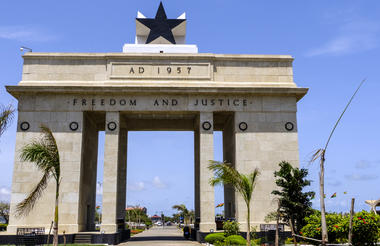
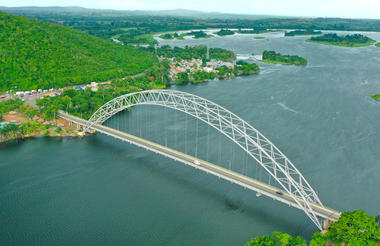
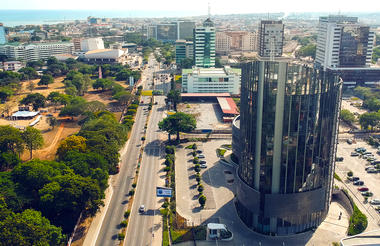
Fantasy Coffins of Teshie, Grand Marche, German Cathedral and National Museum of Togo
After an early breakfast “Fantasy Coffins” of Teshie Nungua is first for us to visit. Funeral and burial ceremonies in Ghana are very solemn occasions, but after the burial a celebration follows. Ghanaians believe that the departed move on into another world, the coffins made here may represent the occupation of the deceased or depict something that was important to them. There is all manner of coffin designs which one could be buried in from cars, cocoa pods, cigarette packets and airplanes to crocodiles, shoes, bottles of beer and boats.
We depart Accra for Lomé the capital city of Togo. The journey will take approximately 4 hours and on our arrival in Lomé we will visit the grand Marché or big market which will be one of our highlights in Lomé. Initially, it seems chaotic, but you will be surprised at the orderliness and the hectic pace of this incredibly vibrant and beautiful market. Though it is supposed to be an indoor market the three-story building and all the surrounding streets overflow with vendors selling everything imaginable. The Sacred Heart or German Cathedral is next on our agenda after the exhilarating experience of the big market. Built in 1905, this imposing Gothic piece of architecture is one of the most beautiful legacies of the Germans. A short distance from the cathedral is the National Museum of Togo, founded in 1975 which houses ethnographical cultural and artistic exhibits. We enjoy lunch at a local restaurant selling local and international dishes after a productive morning.
To be in Lome and not visit the witches market/ marché fetiches at Akodessewa and the artisanal village will not make your trip complete, so after lunch we visit these places. The Akodessewa fetish market is an interesting collection of dried animal parts and skins of reptiles, mammals and birds with a compliment of dried herbs. The vendors usually double as soothsayers claiming the ability to predict your future and at the same time forestall any mishap. It is an eyebrow raising experience. Artisans’ village is next where we will see artisans weaving cloth, carving statues, making baskets, lampshades and sewing leather shoes besides much more. It is fascinating to watch the artisans doing their own thing with such skill and dexterity and always with a smile.



Cruise on Lake Togo to visit Togoville and transfer to Ouidah
A leisurely breakfast this morning as we pack our bags and check out of our hotel. Today we head to Benin, but before we depart Togo we have an interesting morning ahead of us. Aneho is found 48km east of Lome, approximately an hour’s drive from the capital and was historically known as Little Popo. An important town during the slave trade era as there was a local slave market here. The neighboring town of Sebe was formerly the second capital of German Togoland from 1887 to 1897 when it was transferred to Lomé. On arrival in Aneho we take a pirogue across Lake Togo to Togoville which is on north eastern side of the Lake. Togoville is historically known as the center of Voodoo in Togo. Many Voodoo practitioners were taken as slaves from here to Haiti. The chief’s house known as Maison Royal has a room that houses the old King’s throne which dates to 1884. It is in this room in 1884 the then chief Mlapa III signed a peace treaty giving all of what was then known as Togoland to Germany. As we mix with the locals walking through the communities we will visit the many active shrines learning their importance to the locals living here. Prior to setting off back to Aneho we also visit a shrine that commemorates the appearance of the Virgin Mary on Lake Togo in the late 1970s.
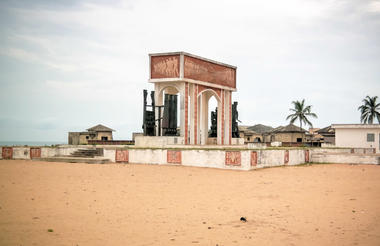


Portal of No Return, Sacred Pythons Temple and Sacred Forest
After breakfast we set off for our tour of Ouidah which is regarded as the Voodoo center of West Africa. During the 17th and 18th centuries enslaved Africans from Benin, Togo and other West African countries were shipped from Ouidah which had the only port in the country until slavery was officially abolished in 1807. Most of the slaves were shipped to Brazil, Haiti and the Caribbean Islands thus the strong Voodoo presence in these parts of the world. A tour of the historical museum of Ouidah is a must as is visiting the sacred forest which consists of figurines representing deities of kings and the founders of Ouidah.
The sacred python’s temple is where we will end our tour of Ouidah. This temple houses pythons which are revered by the locals and no one is permitted to harm, capture or keep any of the pythons which leave the temple. These pythons are supposed to be returned to the temple when found outside. After visiting all these wonderful places in Ouidah, we enjoy our lunch before we continue our journey to Cotonou. On arrival we check into our accommodation, relax with the remainder of the day at leisure.



Ethnographic Museum, Da Silva Museum, Honme Museum and Great Mosque
A leisurely breakfast before we depart for Porto-Novo the capital city of Benin. Our first point of call during our time in Porto-Novo is the Ethnographic Museum which was established by the Dahomey Institute in 1957. The museum houses costumes, ceremonial masks and drums in addition to other historical artifacts. The Royal Palace now known as the Honme Museum is an interesting excursion, the museum is housed in the walled compound of King Toffa who signed the first treaty with the French in 1863. Most of the displays here are from the period of King Toffas reign and there is an excellent example of Alounloun a traditional Beninese instrument used to play music called Adjogon. A stone throws away from Honme is the Da Silva Museum which is in a beautiful Afro-Brazilian house dating back to the 1870’s. An interesting and informative excursion, this eclectic museum is home to some wonderful Afro-Brazilian artefacts and is a must visit during our time here. The Great Mosque in Porto Novo offers excellent photographic opportunities and the history behind how this former Church became a Mosque is fascinating.
We head back to Cotonou where we enjoy our lunch at a local restaurant selling international and local dishes before visiting the Dantokpa Marche one of West Africa’s largest outdoor markets. Covering and area of over 20 hectares it sells everything you could imagine and is a major contributor to the Benin economy. The wax print section of the market is a must visit if we are looking for fabric souvenirs from our time in Benin. After a busy day we return to our hotel to enjoy our evening meal and relax.
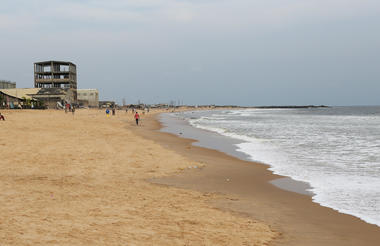
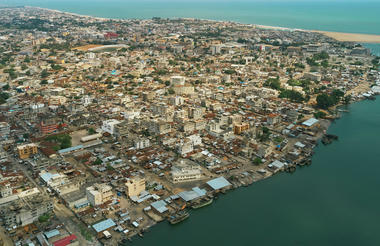
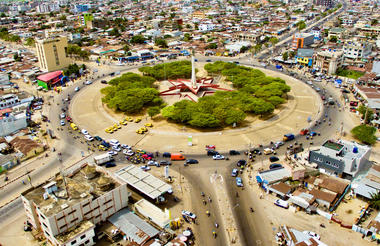
Ganvie the Venice of Western Africa and Agongointo
We checkout of our hotel after a relaxing breakfast. Our focus today prior to heading to Abomey is visiting one of the most beautiful communities here in Benin at Ganvie. Known as the Venice of West Africa, Ganvie is a community of over 30,000 inhabitants living in structures built on stilts over Lake Nokoue. The largest community living on water in Western Africa, most locals here are fishermen. A relaxed paced day and we may decide to try our hands at fishing under the tutelage of a local fisherman. If we are lucky and get a sizeable catch, then our lunch will be fresh fish grilled the local way. After our lunch we set off to Abomey which is approximately a 2 hours’ drive.
Our aim is to reach Abomey by mid-afternoon and visit the recently (1998) discovered underground dwellings of Agongointo - Zoungoudo just a few kilometers outside of Abomey. Discovered during road construction these underground dwellings are believed to date back to the 16th century during the reign of King Dakodonou the second King of Abomey. There are believed to be several hundred of these built 10 meters underground and they were used to protect locals from invaders in addition to offering the element of surprise for local warriors when attacking the enemy.



Royal Palaces and Historical Museum of Abomey
An early start as we dedicate the morning to a city tour of Abomey before we depart for Natitingou. Abomey was the capital of the Dahomey kingdom from 1625 to 1900. The main attraction here is the royal palaces or what is left of them. These clusters of old buildings were constructed by 12 successive kings and cover an area of about 47 hectares. The palace buildings, terraces and open courtyards have a perimeter of 4 kilometers a 10-meter-high wall and could accommodate up to 8,000 people. Our visit here will give us an insight into the history and exploits of these warrior kings. The architecture is quite unique and though the palaces are no more inhabited, two of them are now in use as the Historical Museum of Abomey. The museum contains some 1050 relics of the Abomey kings which include Voodoo artefacts, some skulls and banners of the royal family. Some of the wall art depicts the bloody battles of the people of Abomey. We end the tour of the museum at the artisans shop next door, after which we will set off with a packed lunch and depart for Natitingou. The drive is approximately 7 hours, if you do not like the option of a packed lunch we can stop at one of the local vendors selling local food during our journey. Our aim is to get to Natitingou before sunset and on our arrival, we check into our hotel, enjoy our evening meal and relax for the remainder of our evening.
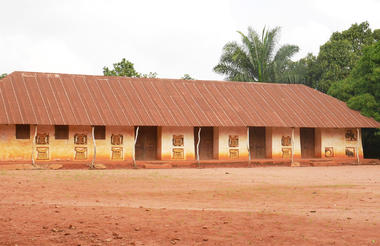
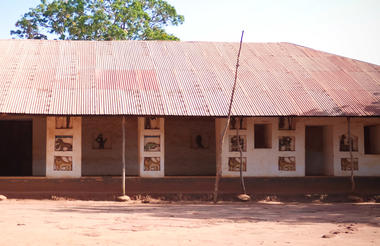
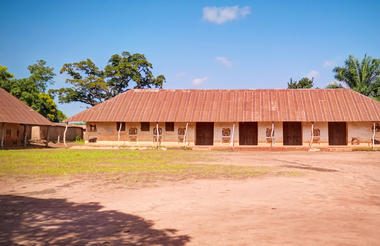
Tanougou Waterfalls and Pendjari National Park
An exciting day lies ahead as we set off to enjoy some West African wildlife here in Benin, checking out of our hotel and heading towards Pendjari National Park. Prior to reaching the entrance gates of Pendjari we stop at Tanougou the local community located on the edge of the National Park. A beautiful village surrounded by the Atakora Mountains that is the water source of the stunning Tanougou Falls. A short hike takes us to these beautiful waterfalls where we refresh and relax. The crystal-clear pools under the waterfalls are safe for swimming and a great way to refresh ourselves before the final leg of our journey to Pendjari National Park. The waterfalls are known as the Tanougou Cascade which locally translates as “Mouth of the Mountain”
After our refreshing stop we spend some time in the community of Tanougou learning about their daily lives as farmers. There are approximately 3000 people living in and around Tanougou and the ethnic group here are the Gourma or Gourmantché who originate from Burkina Faso and are now found in Northern Benin and Togo. As we walk through the community we see locals weaving baskets and selling local produce, a good time to learn about the local cuisine. Pendjari National Parks entrance gate is only 7km from Tanougou and we aim to get to our accommodation in the late afternoon.
As we drive through the park towards our accommodation the landscape is stunning, open Sudan Savannah grasslands and woodland for as far as the eye can see. Wildlife is in abundance here and as we drive Roan Antelope may cross our paths or we may be stopped in our tracks by feeding African Elephants, what an introduction to our time in Pendjari. We check into our accommodation and enjoy our evening meal under the beautiful clear African nights sky and being so close to nature.
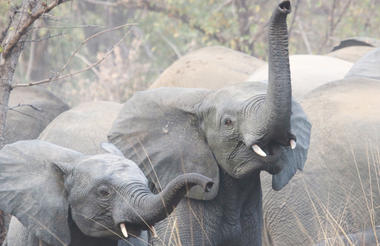
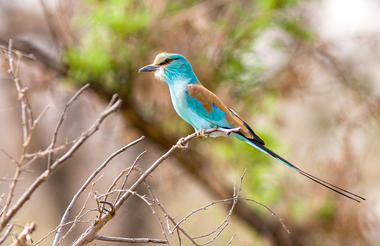
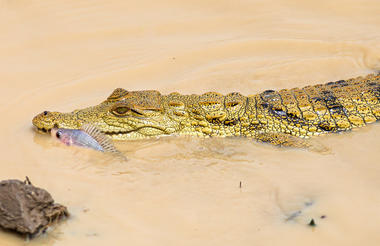
Pendjari National Park
A stunning location to wake up to. Pendjari National Park covers an area of 2755 square kilometers and is part of the WAP W-Arly Pendjari Complex which is a collection of protected areas bordering each other in Benin (Pendjari NP), Burkina Faso and Niger (Arli National Park). Named after the Pendjari River it officially became a National Park in 1961 and a Biosphere Reserve of the MAB/UNESCO program later in 1986. Easily West Africa’s premier wildlife viewing park, over the next 2 full days we will be dedicating our time to safari drives in the mornings, late afternoons and evenings searching for the many wonderful mammals and birds that have been recorded here.
Our main target during our time here is the critically endangered West African Lion, the males are distinctively different with much smaller manes than their central and southern African relative, Roan Antelope, Sudanese Buffalo, West African Hartebeest, Leopard, Bushbuck, Reedbuck, Topi, Waterbuck, Olive Baboon, Patas Monkey, Tantalus Monkey, Warthog, Hippopotamus and red-flanked Duiker are also on our wish list. With over 300 bird species also recorded here our days will be packed with wildlife to keep us busy.
Much rarer but still recorded in this beautiful location are African Hunting Dogs and Cheetah which was chosen as the parks logo. Our evenings will be special as we relax at our accommodation and enjoy the sounds of being so close to nature. As there is little to no light pollution for hundreds of kilometers the clear nights sky (which most are in this part of Africa) will dazzle us as the stars are so vibrant.
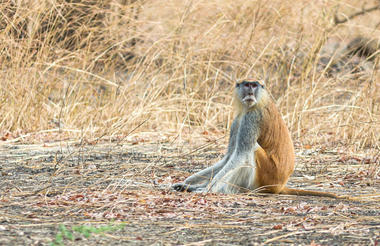
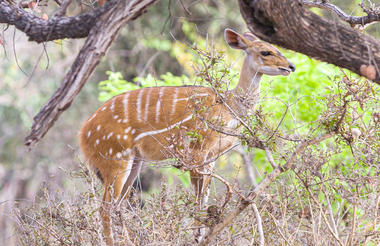
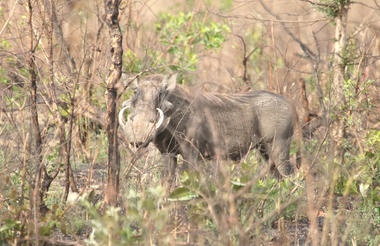
Tata Somba and Koutammakou UNESCO World Heritage Site
An action-packed day lies ahead! We enjoy an early breakfast before setting off leaving the beautiful Pendjari National Park behind after an amazing few days filled with wildlife and adventure. Local culture and history is our focus today as our first location of interest is Tata Somba and the Ditamari people who live in this region of north west Benin. The scenery is stunning and possibly the best landscape in West Africa. As we travel to this remote location there will be many fantastic photographic opportunities for the memory book. The locals at Tata Somba are still living in traditional homesteads that have not changed in centuries with entire families staying in these remarkable buildings. The houses are built as fortresses to keep out intruders and wild animals. Locally Tata means fortress and Somba is the name given to the local ethnic group in the Atacora region of Benin. Tata Somba locally translates as Fortress of the Somba.
A truly amazing community, we meet locals and learn about their daily lives as we walk through the village. The Somba people are known for their traditional body scarring rituals which are given to children from 2 to 3 years of age. These marks are used to identify which tribe you belong to and additional scarring is given later in life to indicate readiness for marriage, reaching puberty and after child birth. In addition to this also for protection against sickness and spiritual attacks. Before we depart for Togo we visit the highest point of this community to enjoy our local lunch and a refreshing drink whilst taking in the breathtaking views over north western Benin and Togo in the distance.
A beautiful drive as we say goodbye to Benin and cross back into northern Togo which is so different to southern Togo we enjoyed a few days earlier. The Koutammakou a UNESCO World Heritage site is the final place we will visit today. North Eastern Togo is stunning, the landscape offers wonderful photographic opportunities and as we travel we will enjoy the changing scenery and local villages we pass through. The amazing mud houses (Takienta) of the local Batammariba community are unique to this region of West Africa. The houses reflect their social structure with traditional beliefs and voodoo being the main form of spiritual belief here. Mixing with the locals and learning their history during our time here is an experience that will live in the memory. Our aim is to arrive at our accommodation in Kara as the sun sets where we can enjoy our evening meal and reflect on an amazing day.



Kara to Tamale
An early breakfast this morning as we set off from Kara to the Ghanaian border town of Nachamba. Most of the morning is dedicated to travel and after an amazing few days in Togo behind us we cross the border back into Ghana for the next part of our West African adventure.
Our aim is to arrive in Tamale for the late afternoon and check into our accommodation. If time permits, we can set off to the Zongo district of Tamale and the open-air tannery. This traditional tannery is where leather goods have been made by hand for generations. We can spend time here with some of the skilled locals seeing first-hand the process in making items such as shoes, bags and hats amongst other goods. A well-deserved rest this evening as we relax at our accommodation and enjoy our evening meal in the capital of the northern region of Ghana.



Tongo Hills and the Oracle of the Tenzug
A leisurely breakfast this morning before we check out of our accommodation and set off further north to the Upper East region of Ghana. As we venture northwards passing through the many market towns and local communities the landscape changes to more open, drier, savannah habitat. The Upper East Region is in the ancient Kingdom of Dagbon and the second smallest region in Ghana. Prior to arriving in Bolgatanga which is the largest town in the Upper East and the capital of this region we make the short detour to Tongo Hills.
Tongo Hills is a mysterious place where there are numerous pinnacles formed by enormous rocks. The local people consider these vestiges as the ancient domiciles of the Gods, in a deep fissure on the side of the highest mountain the cave of the Oracle can be found. The local ethnic group Talensi’s live in fortified homes that accommodate up to 60 people, they have only one entrance and are a labyrinth of walls, stairways and narrow passages. During our time here, we will visit the chief’s traditional home that houses over 300 people, 18 of them his wives. It is believed that this family compound is the largest in Ghana. The local Tenzug Hills are stunning and offer wonderful photographic opportunities as you have exceptional views from this high vantage point. The local community are still very much dedicated to their traditional beliefs and we will notice most houses have their own active shrines outside that are still in use today. The Talensi people suffered badly from slave raiders during the colonial rule and were once ejected from the hills. However, they offered staunch resistance to British rule inspired by ancient ancestral spirits and the Oracle of the Talensi which we will visit during our time here.
A wonderful morning visiting this community, after quality time dedicated here we continue to Bolgatanga for our lunch and to check into our accommodation which may be either in Bolgatanga or in Sirigu depending on your accommodation choice. Our afternoon is relaxed as we enjoy a walking tour of Bolgatanga visiting the main central market. Bolgatanga was one of the main meeting locations during the ancient trans-Saharan trade routes from Mali thattravelledthroughTamaletoSouthernGhana. Famousforproducingstrawbaskets,hats, traditional fabrics, leather goods and metal jewelry we dedicate an afternoon here talking to traders and enjoying the atmosphere of this ancient trading post. After a wonderful day full of new experiences, we return to our accommodation for our evening meal and to relax.



Oracle of Tenzug
Sirigu, SWOPA, Pikworo Slave Camp and Catholic Cathedral
A major highlight of our time in this region of Ghana is visiting the community of Sirigu which is in a remote location approximately 45 minutes’ drive from the regional capital Bolgatanga. As we approach the community in what we feel is the most picturesque area in the Upper East, the beautifully decorated houses of the local community catch our eye. Locals have been decorating their homes painting them with designs that represent local stories and themes, primarily using 3 colours with significant meanings, red (death) white (birth) and black (wealth). As we walk the community your local guide will explain the meanings and stories being told on the houses in the community.
Our first point of call in Sirigu is SWOPA (Sirigu Women of Pottery and Art) which is a fantastic organization established by a local Madam Melanie Kasise. Melanie was raised by her mother in Sirigu who supported the cost of her education and development solely from the money she earned through making local pottery and art. SWOPA has empowered over 400 women in the local community teaching them artistic skills in pottery, painting, basket weaving and tie-die enabling them to support their families through the revenue they receive when selling these items. During our time here, we can purchase a wide range of items made by these women. Our time in the community is special as we visit the local market experiencing how life is daily for locals living here as they trade their goods that range from tobacco, kola nuts and yams amongst other interesting items. Stopping at one of the local spots (bars) to try a refreshing calabash of pito (beer) whilst meeting and talking to locals from the community is a major highlight. As we are visitors to the community it would be respectful in local culture to pay a courtesy call on the local chief.
Our lunch will be taken at the SWOPA canteen as we like to support this initiative that empowers so many women here, in addition to this the food is delicious.
After our lunch we can participate in a workshop teaching us how to make local pottery or tie-die fabrics. One of the local SWOPA members will take us through the skilled process and our product will be interesting to see. Our afternoon is at a relaxed pace as we set off to the nearby town of Navrongo close to the border of Burkina Faso. In old Navrongo we find the unusual large Catholic Cathedral a fascinating mixture of European architecture and local construction techniques using mud bricks and plastered using mud and cow dung mortar. The foundations are a mix of compacted gravel, cow dung and yam beans (dawa dawa).



Accra Mall and Departure
Our final morning with you here in West Africa as we check out of our accommodation after breakfast and set off back to Accra in Ghana for your international flight and departure. On our arrival in Accra we enjoy our lunch before heading to the Accra Mall to give you an insight into modern day Ghana. An opportunity to also purchase some last-minute souvenirs before heading home.
Our early evening meal will be taken at a locally owned restaurant serving an excellent selection of local and international dishes which gives us an ideal opportunity to say our goodbyes and reflect on a wonderful time together. After your meal our team will transfer you to the airport for your departure.









